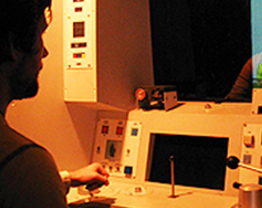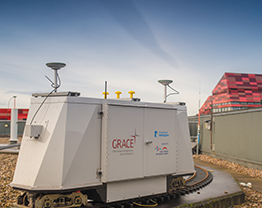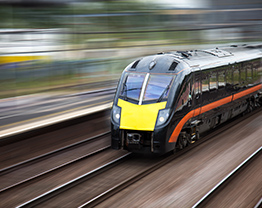Human Factors Research Group


Human Factors Research Group

The Human Factors Research Group (HFRG) is a multidisciplinary, world-leading team comprising of specialists in: cognitive, physical and environmental ergonomics; architecture; urban design; building physics; psychophysics; psychology; engineering; computer science; and product design.
RTS PRIORITY AREAS





Centre for Rail Human Factors
dynamic captive test platform #; 120 m roof top truthing test track (train travels at 7 km/h) #; precision location system calibration #; multi-signal collection and integration #; interference assessment.
full-scale 3-sleeper rig with automated tamping facility #; Large Triaxial Test rigs #; numerous smaller-scale ballast testing facilities.
The dedicated laboratory space (1750 m2) #; prototype electrical machine manufacture #; facilities for power device packaging #; dedicated electronic supplies #; emulation of variable frequency generation systems (up to 270 kW) #; dynamometers (800 kW at 1500 rpm to 49 kW at 120,000 rpm) #; €2M HVDC laboratory for the demonstration of Smart Energy Control and DC Grid Technology (Alstom Grid Centre of Excellence in VSC-HVDC) #; Proof-of-concept demonstrators
National Centre of Excellence test facilities #; composite modelling #; manufacture #; mechanical testing #; inspection #; measurement
€1.5M immersive transport simulation laboratory #; hi-fidelity train cab simulators #; Usability and Ergonomics Laboratory
Mode stirred chamber#; GTEM Cell#; Anechoic chamber#; 3D EM field scanner (2 independently moving probes)
33 Research staff
78 PhD students
45 Masters students
9 grants awarded for a total value of £3.281m
24 papers published
Civil Engineering B.Eng
Manufacturing Engineering (with optional year in Industry) B.Eng
Electrical Engineering and Renewable Energy Systems B.Eng
Civil Engineering: Structural Engineering MSc
Civil Engineering MSc
Engineering Surveying with Geographical Information Science MSC
Human Factors and Ergonomics MSC
Power Electronics and Drives MSc
PhD opportunitiesYes
Continuing Professional Development (CPD) CoursesTailored CDP courses by subject, with various lengths.
Name: Brendan Ryan, Associate Professor Faculty of Engineering
Email: brendan.ryan@nottingham.ac.uk

TESTING AND TRIALING FACILITIES
Facilities